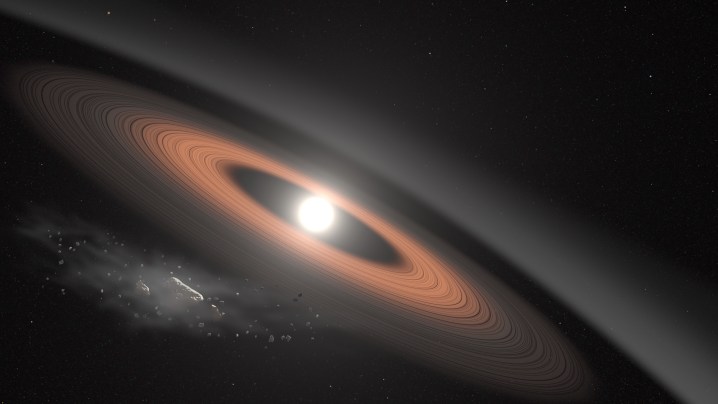
A citizen scientist working with NASA’s Backyard Worlds: Planet 9 project has made a remarkable discovery: the oldest known white dwarf star with multiple dust rings. This discovery calls into question conventional wisdom about how white dwarfs form.
The star is called LSPM J0207+3331, or J0207 for short, and is around three times older than other known white dwarf stars with disks. “This white dwarf is so old that whatever process is feeding material into its rings must operate on billion-year timescales,” John Debes, an astronomer at the Space Telescope Science Institute in Baltimore and lead author of the academic paper, said in a NASA statement. “Most of the models scientists have created to explain rings around white dwarfs only work well up to around 100 million years, so this star is really challenging our assumptions of how planetary systems evolve.”
Only around one to four percent of white dwarfs have dust rings, which scientists believe are formed when dust from distant asteroids comes close to the star because of gravitational intersections with planets. As the asteroids approach the white dwarf, they are torn apart by its gravity and the debris forms a ring of dust which gradually spirals in towards the star. Usually, this dust becomes depleted over time, which is why older white dwarfs don’t typically have rings. But J0207 seems to be an anomaly, and astronomers are planning further observations to discover more about it.
As well as creating beautiful images of other planets, non-professional astronomers can get involved in NASA research through projects like Backyard Worlds which invite the public to search through astronomical data to look for new objects. This particular white dwarf was spotted by young German astronomy enthusiast Melina Thévenot who was actually searching for brown dwarfs at the time. She noticed one reading that seemed out of place, and on further inspection it turned out to be not a brown dwarf at all but a white dwarf with a disk. She passed her findings on to Backyard Worlds, who passed it on to Debes and colleagues who used the telescope at the W. M. Keck Observatory in Hawaii to investigate further. Thévenot said in a blog post that she was “very proud to be part of this discovery.”
The findings are published in The Astrophysical Journal Letters.



